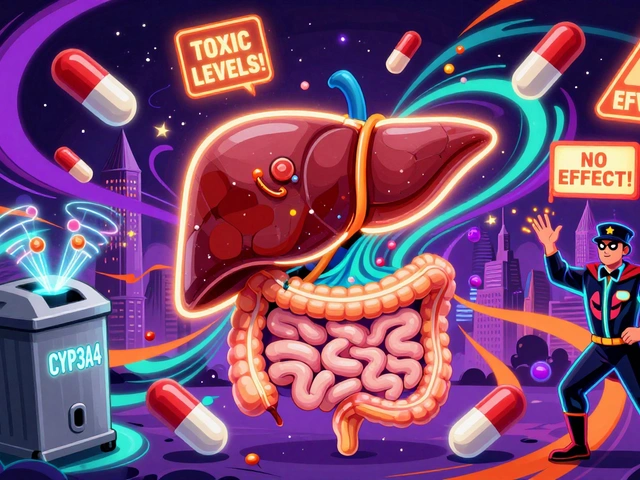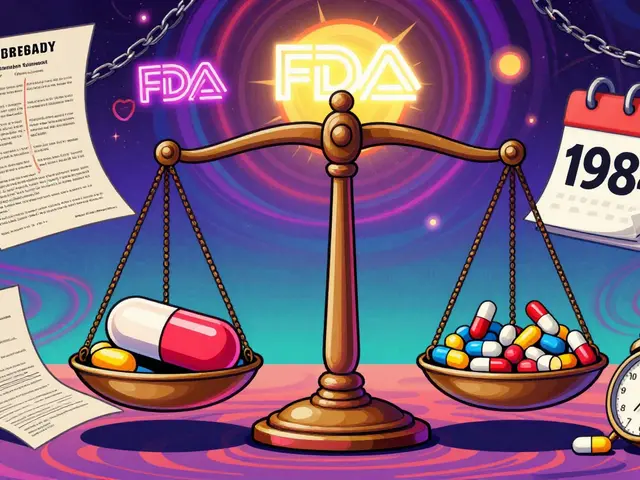Long-term safety: what to watch for with medications
Taking a drug for months or years changes what you need to watch for. Short-term side effects are often obvious. Long-term safety issues can be subtle, build slowly, and show up in lab tests or day-to-day life. Knowing the common risks and practical checks helps you stay safe without fear.
First, ask about measurable risks. Which organs need monitoring? For example, statins may affect muscle or liver enzymes. Metformin can lower vitamin B12 over years. Proton pump inhibitors can raise risks for kidney problems and bone fractures when used long-term. Antiretroviral drugs can affect kidneys or liver depending on the medicine. Ask your prescriber which blood tests or screenings are needed and how often.
Second, watch for gradual symptoms. Fatigue, new aches, unexplained weight changes, memory lapses, or mood shifts may be drug-related. Don’t ignore small changes. Keep a simple log of symptoms and when they started; that timeline helps your clinician decide if the medicine is the cause.
Practical monitoring tips
Keep an updated medication list and share it at every visit. Get baseline blood tests before starting long-term therapy, and repeat them on a schedule your clinician recommends. If a drug raises cholesterol, check lipids and liver tests. If it affects kidneys, check creatinine and electrolytes. If a drug can cause nutrient loss, check relevant vitamin levels.
Ask your clinician about dose reduction or drug holidays if risks grow over time. Some medicines need slower tapering to avoid withdrawal, such as benzodiazepines or opioids. Others may be stopped and replaced safely if a safer alternative exists.
Risks, interactions, and real-world data
Drug interactions become more likely as you add supplements or new prescriptions. Bring prescription, over-the-counter, and herbal products to your pharmacist for a review. Real-world studies often show side effects that clinical trials miss. Ask if there are long-term safety studies, or look for registries and patient reports from trusted sources.
Report side effects. Regulators collect reports that feed safety updates and labeling changes. If you suspect a serious reaction, contact your clinician and report it to the national adverse event system in your country.
Special groups need closer checks. Older adults may clear drugs slower, increasing risk. Pregnancy, breastfeeding, liver or kidney disease, and genetic differences can change long-term safety. Speak up about these issues so your care team can adjust therapy.
Finally, weigh benefits and risks regularly. A drug that gave big benefits early on may offer diminishing returns years later. Schedule medication reviews at least once a year. That short conversation can stop harm and keep the drug working for you.
If you want, bring a list of questions to your next appointment: which tests, what symptoms to watch for, signs of serious problems, and when to stop the drug. Small steps now prevent big problems later.
Need quick help? Your pharmacist can flag interactions, nurses can arrange tests, and many clinics offer yearly medication reviews free or low cost—ask for one today and stay informed.
The Long-Term Safety of Alendronate: What the Research Says
In recent years, there has been growing interest in the long-term safety of Alendronate, a medication commonly used to treat osteoporosis. Research suggests that while Alendronate is generally well-tolerated and effective in increasing bone density, some concerns remain. Notable side effects include gastrointestinal issues and the rare but serious risk of atypical femur fractures. Despite these concerns, most studies indicate that the benefits of Alendronate use outweigh the risks for most patients. However, it's essential for individuals to consult with their healthcare providers to determine the best course of treatment for their specific needs.





